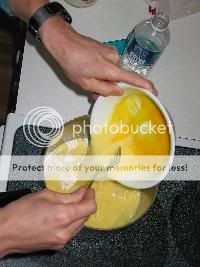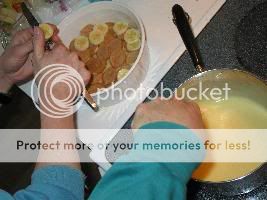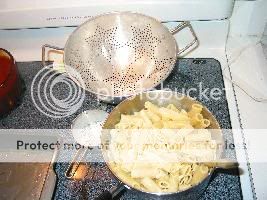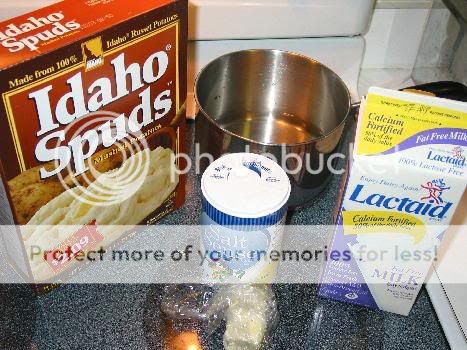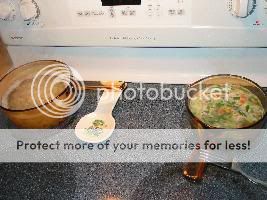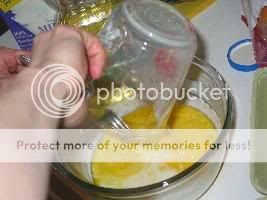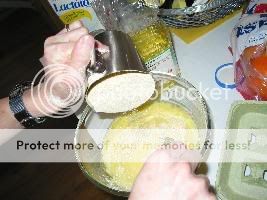A couple of books which everyone from teens onward need to read before entering into our Society today:
1.Your Money or Your Life by Joe Dominguez and Vicki Robin
2.The Complete Tightwad Gazette by Amy Dacyczyn
3.The Millionaire Next Door by Thomas Stanley and William Danko
4.Voluntary Simplicity by Duane Elgin
5.Affluenza: The All-Consuming Epidemic by John De Graaf et.al.

De Graaf and Elgin approach the consumerism of our American society with a left-wing liberal stance while Amy Dacyczyn approaches it from a very pragmatic and conservative perspective. Joe Dominguez is probably somewhere in the middle in his approach, but more conservative than liberal. No matter what your ideology may be, these books carry the common thread that WE HAVE TOO MUCH STUFF cluttering our lives - that we have let ourselves become puppets in a game played by Marketers. Why do we need to upgrade the Microsoft Windows program every 2 years? Why do we need 100 television channels (all garbage)? Why do we need a 52" plasma-screen TV? Why do we need new clothes every year? Just a cursory review of one's values and a moment's thought will convince any reasonable person that he needs none of that garbage.
There is a very brief and trendy book written by Elizabeth Warren and her daughter (The Two-Income Trap...) which tries to enable the modern consumerist behavior of Americans by providing several lame excuses. In typical liberal fashion, the Warrens point the blame for such behavior on everybody and everything except on the perpetrators themselves. According to them, we have already done the best we can - shopping and overspending are all justified in the name of our own well-being. According to them Banks, large Corporations, and governments have led us ignorant pawns into debt traps - we must change the laws instead of our own behavior in order to help ourselves. This is all drivel - I'm certain anyone who decides to purchase something they can't afford realizes they are making a mistake. This type of over-spending is a disease, a pathological behavior, not an inevitable series of decisions made for justifiable reasons as the Warrens claim.
Of all these books, probably the most life-transforming book is Joe Dominguez's unfortunately & kitschily-titled book (Your Money or Your Life) - this books looks very much like one of those self-help-pop-psycho-babble financial-gurued-Ponzi-schemoid-looking rags and its appearance and title might be off-putting to people who believe themselves to be too good for this sort of advice. This book nevertheless distills in very concise and simple terms the essential philosophies and actions one must take to transform oneself from a mindless automaton who shops recreationally and spends his life energy away into a person living with common old-fashioned sense. Some of the advice in this book is a bit too simple, maybe too inflexible, but the essential points in the book are worth millions of dollars to anyone: that one must keep track of every penny one spends, that one must live with near-term and long-term financial goals in mind, that there is more to life than making money, that one must live with frugality and wisdom.
My favorite book of the above however is Amy Dacyczyn's Tightwad Gazette - her approach is so revolutionary and her example is so inspiring that this book has caused my wife and me to make spectacular changes in our lifestyle. Last year at this time, our typical day began with deciding where to eat for lunch - typically someplace like Quizno's subs where we gobbled down about $15 worth of fast-food with sodas. We'd then drive around our local mega-shopping conglomerations, touring Target, Dick's Sporting Goods, BJ's Warehouse, Best-Buy, Home-Depot, and maybe our local mega-mall as well. We might have a specific item we would consider purchasing such as a $600 set of All-Clad cookware and look at some prices at various places, but not buy them and so consider ourselves good shoppers. Yet we'd along the way pick up a stray $10 toy here, and some unnecessary $18 stationary items there, and maybe some baby clothes here, some toiletries there, etc. By the end of the day we'd rack up $50-$100 in meaningless purchases. After picking up our son from school, we'd discuss where to eat supper and typically dine at maybe an Italian restaurant where we'd ring up another $35 meal before heading home tired and inexplicably frustrated. Since reading those books above, and especially Amy Dacyczyn's books, we make our own meals (~98% of the time anyway), we have found an ALDI Foods store in Raleigh where we can purchase an all-generic high-quality super-cheap groceries. We've shopped alternatively at a bread outlet store. We've decided to forego our nearest Harris-Teeter (our erstwhile favorite high-priced grocery chain). Yes, we've put together a grocery "PriceBook" per Dacyczyn's advice (I had 5 - that's right FIVE - managers at one grocery store accost me angrily while I madly scribbled the price of almost every item on their shelves). My wife even went to a yardsale last weekend where she purchased a half-dozen outfits for our 2 year-old at 25cents each. These behaviors are unheard of for us - we were inveterate brand-name and label readers. Our favorite phrase used to be "you get what you pay for." But on further investigation and experimentation, we found that many of Dacyczyn's advice rang true - just as with most pharmaceuticals, many generic products perform just as well as their brand-name brethren costing much more. As an example a generic Aldi vanilla wafer costing less than half Nabisco's Nilla wafers taste just as good. A slice of 55cent per loaf honey-wheat bread taste just as good as Nature's Own Honey Wheat slice costing $2.39 per loaf! There are certain items where a specific flavor may be so imprinted into my chemoreceptor-memories such as Heinz's ketchup or Tabasco sauce, that a generic will not suffice. But these items are few. I've calculated that we could possibly cut into our monthly food bill by another 33-50% if we followed many of Dacyczyn's techniques (such as "shopping to stock your pantry" rather than shopping to fulfill certain meals). We used to spend about $1000 per month dining out on top of another $500-$600 on groceries. We were able to cut our monthly grocery and dining bill to $400-$500 thus far, and can project that we could eat happily and comfortably on between $250-$300 per month - Amy Dacyczyn would scoff at such numbers since she has fed her family of 8 on $180 per month. But for us, this is tremendous. I've placed an order for TVP (texturized vegetable protein) - a dry soybean by-product substitutable for meat in many dishes, cheaper than tofu and all meats. My local small health-food store is letting me have a 25lb bag of this stuff at 10% off their $1.09/lb price.
We went to the Wake County Libraries annual booksale last week - it was quite an extravaganza. There were literally hundreds of people lined up around the block waiting for the warehouse to open - camera crews from our local WRAL newsteam were there filming hundreds of tightwad nerds near-rioting over used books. Hardbacks were going for $4 each (no bargain), paperbacks for $1 each (ok deal) the first night. The weekend promised BOXFULS of books for $5 or bagfuls for $2. Needless to say, we got ourselves a buttload of books this weekend. We actually spent $25 total in books, but got a load of books - What Color is Your Parachute 2001 edition, Motley Fools' Investment Guide, The Frugal Gourmet, Betty Crocker's Cookbook, about a dozen children's books, several medical books, etc. including an entire set (I,II,III) of Amy Dacyczyn's Tightwad Gazette books! (we read from library copies and didn't have our own copy til now). We plan to eventually resell most of these books to our local used bookstores for credit or cash. Since we didn't really need any of these books, I guess this was a very consumerist thing to do and only added to our clutter and affluenza, but this was a hell of a good time and served as good entertainment as well.
My near-term goal is to participate in a yard-sale where we actually are selling our own stuff instead of buying other people's junk. We have so much junk in our house that I believe yard-salers would salivate over some of our stuff. According to the Millionaire Next Door book's research, physicians are horrendous spendthrifts and are almost always "Under Accumulators of Wealth" for many reasons enumerated in that book. The reason that most rings true is that we are expected to live in a certain lifestyle and behave and appear at a certain level toward our public and our patients. Just as Realtors must "look successful" in order to be successful, doctors must appear affluent and successful. As a result, as described in that book, a surgeon earning $700,000 a year, might have $300,000 in annual basal expenses and so after taxes end up with the "Big Hat, No Cattle" syndrome. Well, we are determined to break the mould - neither my wife nor I give a shit about what others think about us, including most of our patients honestly. Both my wife and I dress like we did when we were in college - typically in T-shirts and sneakers. We will honestly never purchase a luxury car. We will try to avoid cavorting with our physician friends and colleagues. In fact, we try to avoid letting anyone know we are physicians because we know that doctors get crapped on everywhere they go. For example, at a typical Medical Conference, our medical societies would tip us off that we will get cheap rates at the hotel if we tell them we are with them - of course when we fall for this sucker-bait, we are indeed offered the "Special Rate for Doctors Only" - gee thanks for the special deal guys! Physicians are one of the most likely to get audited by the IRS, we get one of the highest automobile insurance rates, we are the most likely to get sued (I've been sued already once and had to endure a grueling 2 week trial last year - more about this later), and this book shows us that physicians are one of the people least likely to become millionaires. Despite this, the public believes all doctors are rich and live like Orthopedic and Plastic surgeons to the Hollywood stars. After finally climbing out of debt 18 years after highschool, this poor physician couple (both primary care) are happy to be living paycheck to paycheck. Sure we could have done better had we lived frugally like Amy Dacyczyn, but we are surrounded by Affluenza-stricken, consumerist spend-thrifts, bad advisors, and most importantly, "the inner desire for More" within us which we kept caged within during our poor college years and medical-school years, through our overworked-yet-still-poor-as-hell residency years (while our friends who began work out of college were socking away thousands in their 401ks and making big bucks during the dot.com boom/bust cycle). The mantra of "delayed gratification" which keeps many student-physicians going through residencies and fellowships lasting decades will often lead to a burst of wild spending upon landing their first jobs. This self-destructive spending post-education often entrenches young doctors into the under-accumulator-of-wealth track - we are one of the thousands of examples. Upon careful calculation, I have determined that my wife and I will never be rich, but we also will never be destitute, and we are happy enough for that. My long-term goals: to stay married (never divorce), to reasonably fund my two babies' college education using the 529 college savings plan, to try to pay off my mortgage as soon as possible (before 14 years), to sock away as much into retirement as possible before I turn 60 years old - so as to generate an amount providing financial independence as defined by the late Joe Dominguez.

